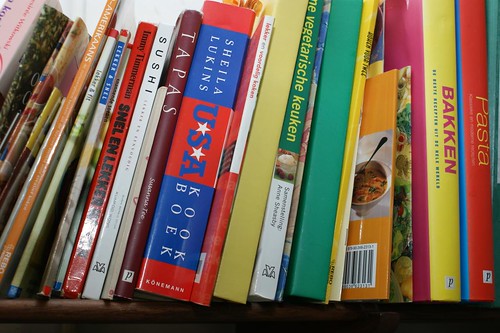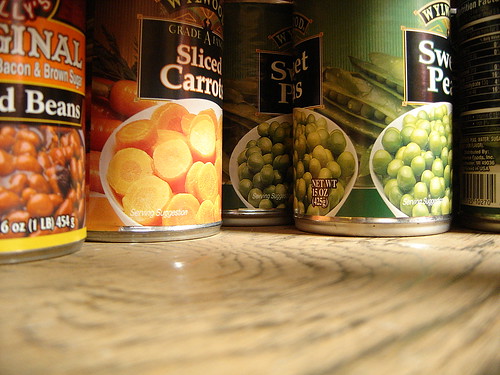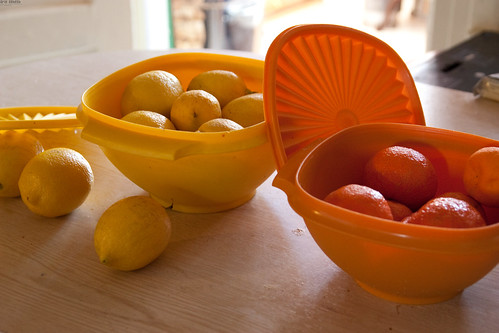 |
| miniature fast food uploaded by shimelle |
Everyone [or, at least, many many people out there] want to whip up their meals as quick as possible. But here's the truth, as you'll never hear it from one of the hundreds of "fast recipe" cookbooks out there: cooking is just not a fast process. Unless you're vegetarian, no matter how simple your dish or ingredients are, the meat still has to be cooked...and if you are vegetarian, odds are you've got to chop a whole lot of vegetables.
I've used a lot of cookbooks, most of them quick-fixes, and after an hour of slaving over the stove, I often wonder how any of these books got published. Turns out I'm not alone in this thinking and even the queen of 30-minute meals, Rachel Ray, gets a bad rap for her meals not actually taking 30 minutes. Turns out you have to read the introduction where she carefully specifies that you "remember to chop up your vegetables" as soon as you get home from the store. Not only does that sound a bit excruciating, but a lot of veggies just are not going to last all week chopped up.
 |
| another hobby uploaded by havankevin |
Thus, I have come to the conclusion that quick cooking is a lifestyle. You're going to have to plan a little bit, and be a bit clever in re-using and maneuvering through your meals, but 30 minutes of planning on Sunday afternoon can help make your cooking a breeze all week long. If you can't bear to plan, then just remember to K.I.S.S. Grill a piece of meat (5min each side is a pretty standard bet) with some seasonings or pour on a simple sauce (soup bases are a great start), chop and grill some simple vegetables on the side while the meat cooks and throw a slice or two of toast in the oven. Done in no more than 20 minutes.
In the meantime, if you are willing to plan a bit, here are some tips to get you started cooking real, well-rounded meals fast:
1. Manage Your Vegetables
Chopping vegetables is probably the single most time-consuming process of cooking. Conquer your veggies, and the rest of the meal is quite painless.
2. Make-ahead
 |
uploaded by trekkyandy
|
- For the fastest vegetables, use frozen mixes. Unlike nearly everything else pre-packaged out there, frozen vegetables are actually good for you because they are usually frozen while the veggies are fresh- locking in the nutrients. The downsides are that frozen veggies won't have the nice, crisp texture that fresh do and pound for pound, they're more expensive.
- Canned vegetables are the worst for you nutrient-wise, but most health experts will tell you that just eating your greens is good for you. My favorite veggies to get out of a can are peas, sliced mushrooms, french-cut green beans, water chestnuts and corn (if you consider it a vegetable).
- Pre-prepare yourself. Every now and then I do take the Rachel Ray route and chop up a bunch of vegetables in one go-- usually when I notice something (like broccoli) is about to turn or if I'm already chopping a carrot, I may just finish the whole batch while I'm already at it. However, I freeze them when I'm done. Some things should probably never be done this way, though, like tomatoes, cucumbers or onions, but that's subject to opinion.
- One of the most valuable lessons I learned from my mother was to make (ie: rinse and rip apart) enough salad greens as you'll eat in a week and put it in a salad-keeper. You'll still need to add things like tomatoes and onions the day of, but it saves a good chunk of time.
- Befriend the easy-to-handle vegetables. Baby carrots are brilliant- just rinse and cook. Snow and snap peas can be just as easy, though you may want to quickly chop off the pointy tips. Baby spinach also just needs a good rinsing- usually no need to tear up. Tomatoes and mushrooms are quick and easy to slice and fresh green beans can be a breeze if you just master chopping off the tips in bulk.
2. Make-ahead
This is where the planning comes in. If you're less picky about eating the same meal multiple times in a week, this can really help.
 |
| Getting Along uploaded by Orin Zebest |
- Since most meals take roughly the same amount of time to cook no matter how many portions you make, make twice as much and doggy-bag half for another day. Meals usually last for three days in the refrigerator and weeks to months in the freezer. If you're really not fond of eating the same meal on Monday and Wednesday, then invest in some decent freezer tupperware and stock-pile a whole inventory of your own microwavable meals for future use.
- You can also make-ahead individual elements. You've probably noticed that I like to say "dump in a serving of rice" in a lot of my recipes. When I make rice, I make as much as the rice-cooker will handle (the size of decent saucepan or about 2-3 bags worth of boil-in-bag rice). Then I either use it all week long, freeze it in meal-sized portions or both. You can do this with pasta, potatoes or vegetables as well.
- I also like to prepare basic meats in bulk. E.g.: if I'm boiling and shredding chicken for use in one recipe, I'll make two meals worth and pack away the second half for another recipe later. This is most useful for unseasoned/generically seasoned meats that can later go into a casserole, pasta or a stir-fry.
- Don't forget some of the most useful store-bought "made-ahead" meats: ham and sausage. Though sausage may have some questionable mix-ins, pre-cooked ham is a very reliable meat that need only be reheated.
3. Make all-in-one meals.
One of my first and favorite cookbooks was Simple One Dish. Though the majority of the meals are not fast and use a lot of pre-packaged goods, the book taught me the highly useful art of turning one entree into a full and balanced meal.
 |
| ham fried rice uploaded by jeffryw |
- Sliced, seasoned meat cooks quickly and easily in a pan. Cook with some of the easy-to-chop vegetables and add rice, noodles or pasta for your carbohydrates and your major food groups are nicely packaged and ready to eat.
- Take some of the pre-cooked meat you've been making from lesson 2 and layer it in a casserole dish with potatoes or rice and a can of soup of your choice. Bake for 20 minutes and you have a nearly instant casserole.
- Other classic all-in-one meals are stir-frys, fried rice, pasta with meat and veggies (like spinach), soups and big, meaty sandwiches.
Happy Cooking!


No comments:
Post a Comment